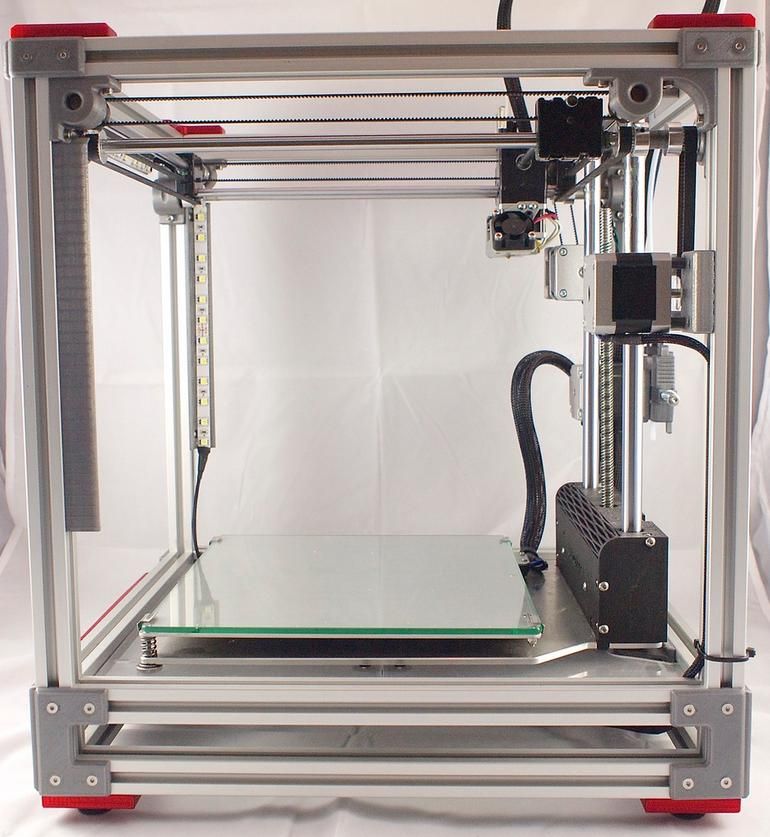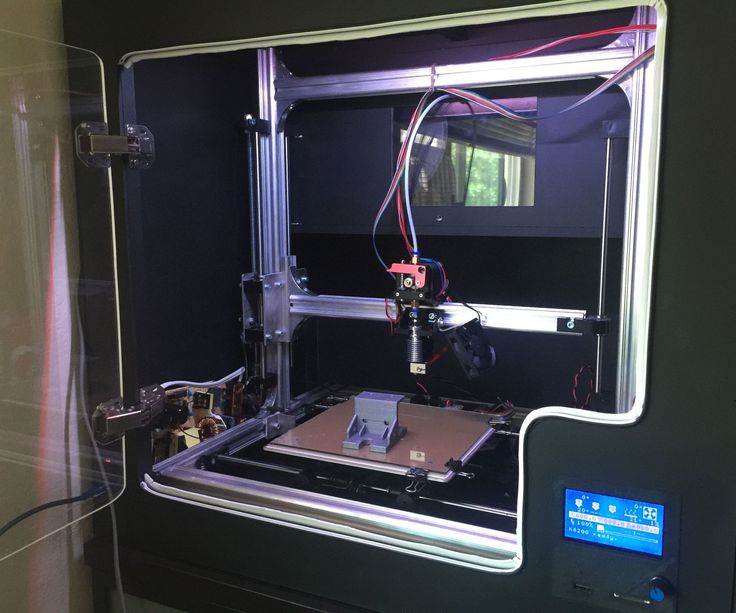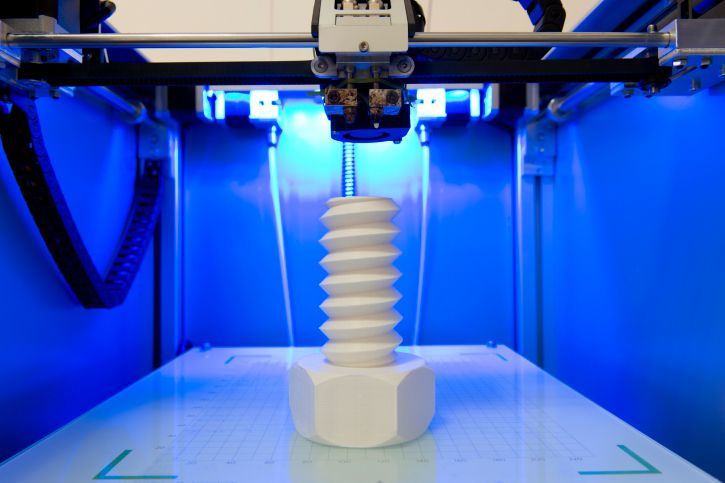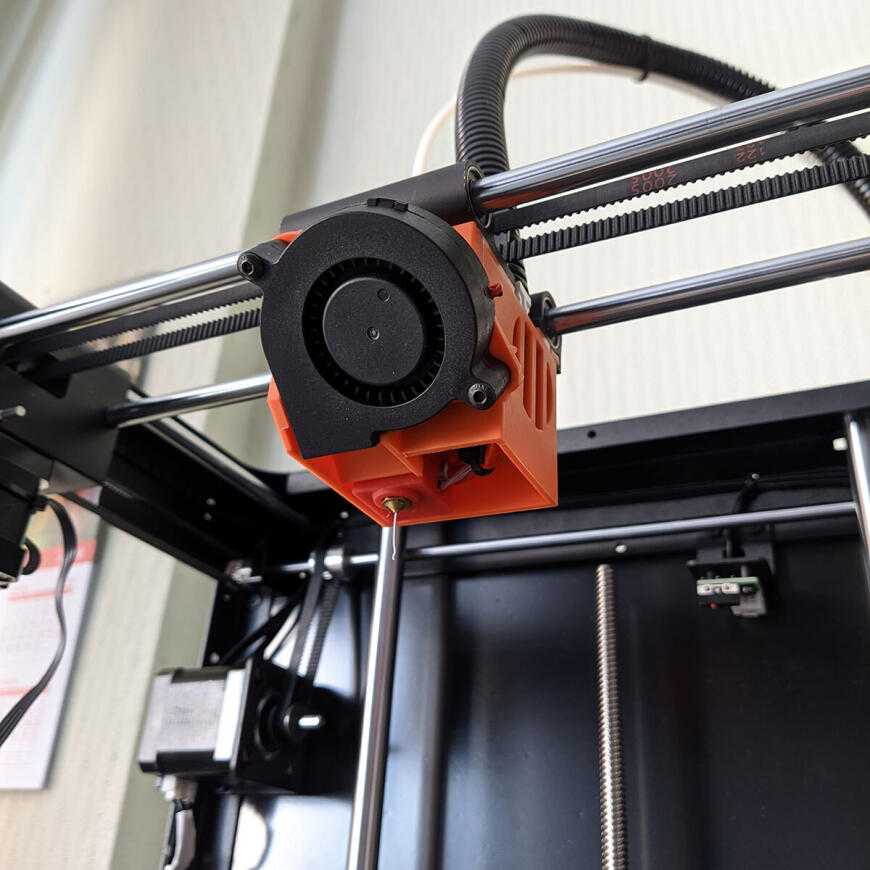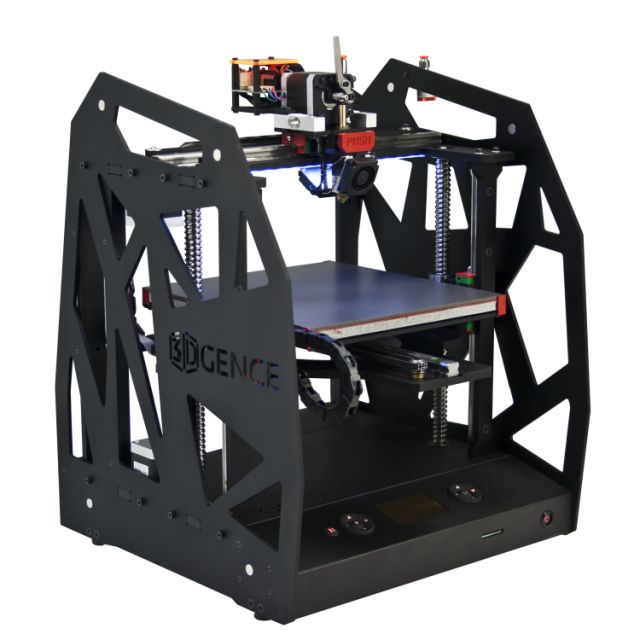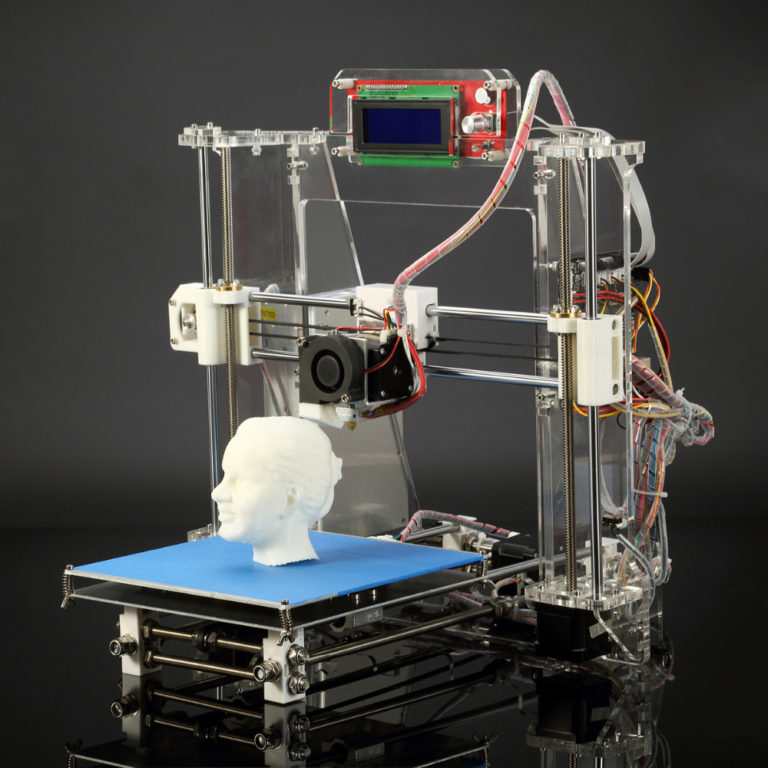3D print glue
The Great Guide to Gluing and Assembling 3D Prints
There are many reasons why you would want to cut a 3D model into more pieces and print those separately. An insufficient print volume is the most obvious reason. Even with relatively modest-sized printers like the Original Prusa MINI+ or Original Prusa i3 MK3S+, you can create huge objects! And even a larger (or shall we say XL?) print volume will sometimes not be enough to print everything in one piece 🙂
Check out this video: all the prints featured there were printed on MK3S/MK3S+ printers!
However, there are other factors as well. You might want to avoid overhangs, optimize the print layer direction (either for aesthetic or mechanical purposes), or assemble a model from multiple colors and materials. Printing separate parts also helps control the risk of a failed print.
Cutting the model is the easy part (you can do simple cuts directly in PrusaSlicer, actually). Now, let’s elaborate more on how to put everything back together. 🙂
There are myriad options on the market, we will focus just on three main glue types that we consider the most viable choices: mainly cyanoacrylate glues, then solvent glues, and two-part epoxy glues. We will compare the pros and cons of each type and provide you with a few product examples which we bought and tested first-hand.
Disclaimer: Worldwide availability of certain glues can be very tricky. Even global brands don’t offer the same stuff everywhere or use different names, etc. We used what was available here, in the Czech Republic. We are aware that not all of the products are available to all of you. We will try to expand the article later with more alternatives, based on your suggestions. Thanks for understanding.
Table of contents
- Common rules of thumb
- Cyanoacrylates
- Debonders
- Which cyanoacrylate to choose?
- Warnings, tips, and fun facts…
- Solvent-based glues
- Capillary effect gluing
- Which solvent-based glue to choose?
- Warnings, tips, and fun facts…
- Two-part epoxies
- Which two-part epoxies product to choose?
- Warnings, tips, and fun facts…
- Other glue options
- Non-permanent means of assembly
- Results of a tensile strength test
Common rules of thumb
For a strong bond, the mating surfaces should be as clean and level as possible. Some types of glue prefer a smooth surface, some rather coarse, but still clean and level. Sand the surfaces down if necessary (but clean the sanding dust afterward), remove grease marks, paint, putty, and residues of previous gluing attempts.
Some types of glue prefer a smooth surface, some rather coarse, but still clean and level. Sand the surfaces down if necessary (but clean the sanding dust afterward), remove grease marks, paint, putty, and residues of previous gluing attempts.
Proper ventilation is a ubiquitous piece of advice that goes with everything, but it’s really twice as important with glues, which are often irritant or outright toxic and/or with slight narcotic effects. Remember kids, glue-sniffing is bad for you! 🙂
Before you choose the right glue, think twice about all the aspects of the application. Size, the material of your prints, and their intended use. Do aesthetic or mechanical qualities matter? How about resistance to heat or cold? Do you need a truly permanent bond or disassemble the model later? Are you going to post-process the seams somehow?
Simply put, gluing a resin miniature is going to be vastly different than assembling a life-sized cosplay armor costume.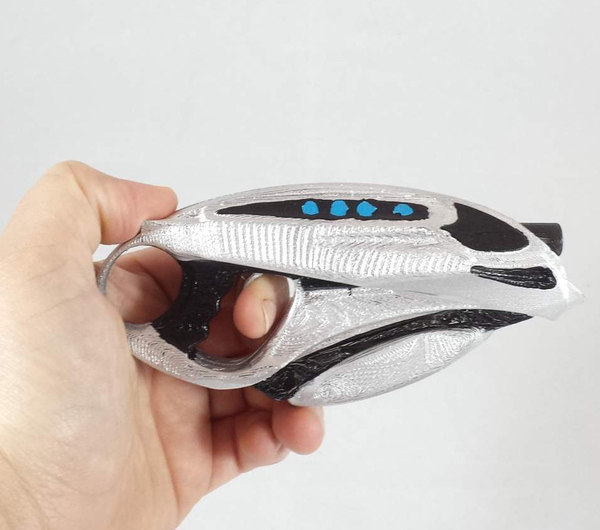
Now let’s move on to particular glue types.
Cyanoacrylates
Cyanoacrylate glues, mostly referred to as CA glues or superglues (further only “CA”), are based on ethyl cyanoacrylate and related chemicals. The polymerization process is quickly started by contact with water. Normal air moisture is usually more than enough for a rapid reaction. If you want to accelerate it further, you can use commercially available solvent or water-based accelerators (activators), or just regular water in a spray bottle. A good trick is to breathe on the glued joint with your mouth (just make sure you don’t inhale the CA fumes) and let the breath moisture do the work.
However, usually, it’s rather the quickness of setting that poses a problem, especially with large parts. You have only very little time to adjust the joint, as it becomes sticky very quickly. This is twice challenging with resin parts, where the bond is almost instant.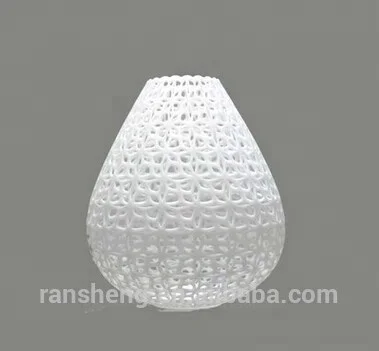
Messing with the adjustment also compromises the final strength of the bond. If you don’t reach a correct fit in a few seconds, it’s usually better to clean off all the glue from the mating surfaces and start anew.
CA is almost equally suitable for all common 3D printed materials (PLA, PETG, ASA/ABS, SLA resin, etc.). It is usable even with TPU/TPE (Flex), as long as the mating surfaces are at least a bit stiff. A bit porous material (i.e., with 3D print layers) is not an issue, on the contrary, it improves the bond, while very smooth materials like glass, ceramic, or metal are problematic. CA interacts minimally with the glued material itself, with the exception of certain foam plastic materials (styrofoam), which are outright melted by CA. Also, it makes clear styrene plastic become brittle.
When drying, CA glue shrinks slightly and thick layers become coarse and wrinkled, so it’s not very aesthetic. Also, fumes from a larger amount of CA glue create white frosting (blooming) around the joint.
Note the whitish stains around the glued joint – typical CA frosting
The effect is most prominent when the fumes cannot escape (say, when you place a freshly glued object into a plastic container too soon). The longer the drying time, the more frosting. To minimize it, you need strong ventilation.
A regular CA is a rock hard when cured. Even though it dries almost instantly and is pretty hard right away, it reaches the maximum hardness only after several (8-24) hours. The hardness is a mixed bag though. First, CA has very high tensile strength, but quite low torsional and shear strength. That means the parts are much easier twisted or peeled than pulled apart.
Secondly, CA might be hard to sand down, especially if the surrounding material is much softer. This is not an issue with PLA, which is very hard itself but sanding for example glued resin parts can be tricky. The softer material yields faster, so you might end up with a patch of CA still present and shallow “valleys” in the material around it. It helps to sand the CA while it’s still not cured completely.
It helps to sand the CA while it’s still not cured completely.
On the other hand, if you are patient, CA can be sanded to a very smooth, glass-like surface. It almost doesn’t peel or crumble and remains solid even in very thin layers. For these qualities, it is often used as a surface coating or excellent makeshift putty. For the latter option, CA is sometimes mixed with additives to give it more substance and make it easier to sand: talcum powder or so-called microballoons.
Note that CA becomes brittle when frozen, so it’s not suitable for outdoor use in temperate/arctic climates. You can exploit this characteristic though, to easily snap off glued parts by putting them in the freezer first.
As for the other end of a temperature spectrum, reportedly, regular CA keeps about 50% of its strength at 80 °C (176 °F) and about 20% at 100 °C (212 °F). Special heat-resistant CA products keep 80% of their strength at 120 °C (248 °F). Therefore, think twice before supergluing anything to your extruder…
Therefore, think twice before supergluing anything to your extruder…
CA has a limited shelf life, it thickens and finally hardens rock solid. Usually, it’s a question of mere months. Obviously, moisture speeds up the process.
As for storing CA in a fridge to extend its longevity, it’s a bit of a double-edged sword. Moisture hardens CA, and colder air holds less moisture. However, when you put the cold bottle or tube out of the fridge, water vapor will condense on/in it, making things actually much worse. Therefore it is usually advised to only store unopened containers in a fridge, and always let them warm up to ambient temperature before opening them. It would make sense to store CA in a drybox, although we didn’t test whether there is any substantial effect.
Your best bet is to try to keep the CA container clean and tidy for as long as possible. It is always better to not use the container directly, but carefully put a puddle of glue on a clean, non-porous surface and work from there, using for example a cocktail stick.
If the CA is in a tube, store it in an upright position, so the glue doesn’t stay in the applicator. Pinch the tube only very carefully to force the glue out (or it never stops flowing). If you spill the glue all over the applicator, don’t set your hopes on wiping it clean, you can’t stop the chain-polymerization and that container will probably become a lost case soon. It’s all about prevention.
Clogged plastic applicators can be pushed through with a needle or have the clogged section trimmed, metal applicators can be cleaned by burning them through with a lighter (remove the applicator from the container first, of course).
Parts of the Stearman Kaydet, a biplane model by 3D LabPrint. That’s a lot of stuff to glue together!
Debonders
Debonder is a special product used for dissolving cured CA. While CA is often used in a household by the general public, the existence of debonders seems to be a well-kept secret known only to some hobbyists.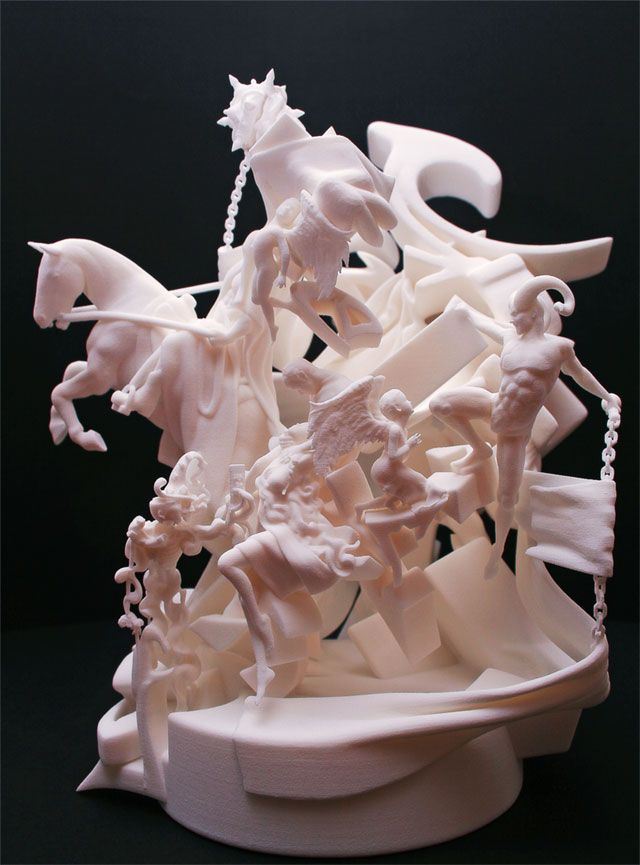 That’s a pity because the “reversibility” they provide to CA presents a big advantage over solvent-based and two-part glues. You can dismantle a glued model with little or no damage, clean off any glue stains, etc. With a cotton swab soaked in debonder, you can wipe off the excess glue from a joint, thus save a lot of time otherwise spent sanding the surface.
That’s a pity because the “reversibility” they provide to CA presents a big advantage over solvent-based and two-part glues. You can dismantle a glued model with little or no damage, clean off any glue stains, etc. With a cotton swab soaked in debonder, you can wipe off the excess glue from a joint, thus save a lot of time otherwise spent sanding the surface.
There is a catch though. Commercially available debonders are based on various solvents and have an unpredictable level of strength and speed. Some do nearly nothing, some eat even through the plastic around. Always test a debonder reaction beforehand to prevent nasty surprises, even if you start a new bottle of the same brand (manufacturers sometimes change the formula without warning).
Instead of a dedicated debonder, you can use some nail polish removers or even pure acetone. Of course, the same precautions apply.
Bolt Off is a Czech product, but available in some hobby shops around Europe as well.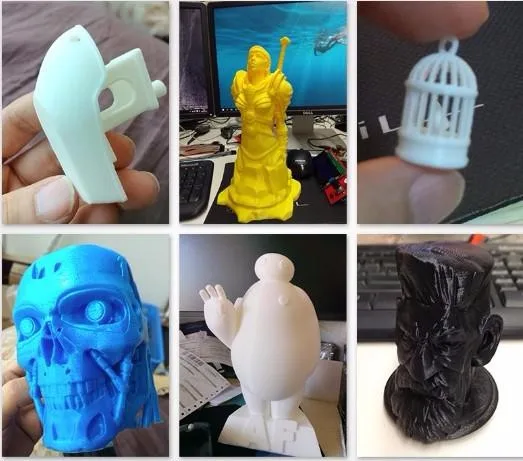
Which cyanoacrylate to choose?
In general, price and quality do matter, to an extent. The cheapest no-name CA sold over the counter in 7-11 stores is usually terrible, the tubes are often half-dried or half-empty and the whole other half gushes out when you try to pierce the tube to open it. Such glue provides a weak bond. Interestingly, it seems that the weaker bond, the stronger smell (probably because there is more solvent in the mix than actual cyanoacrylate).
For real CA connoisseurs, there is a record-breaking CA glue by 3M, able to hold an 8-ton forklift in the air, which costs about 20$ for a shot glass-sized bottle.
Usually, you can settle for something in between 🙂 Large companies like Henkel (Loctite) or Alteco make 1-2$ tubes which offer an excellent value.
The thing is, even the most expensive CA will thicken and then dry out relatively quickly, so don’t splurge unless you know you will use the glue often and/or in large amounts.
In the examples and test results below, you will see that the two best performers by far were the simple Alteco $1 tube and the Pecka Modelar glue.![]() The latter is a local scale/RC modeling store’s in-house brand. While it won’t help much to all our readers outside the Czech Republic, at least it’s an indirect piece of advice: in small hobby shops run by enthusiasts, you will often find much better products than in large DIY stores!
The latter is a local scale/RC modeling store’s in-house brand. While it won’t help much to all our readers outside the Czech Republic, at least it’s an indirect piece of advice: in small hobby shops run by enthusiasts, you will often find much better products than in large DIY stores!
There are many cyanoacrylate variants created by mixing the common basic substance with various additives, yielding very different characteristics. Here are some examples:
- Gel (viscous) CA glues, mixed with ingredients like fine silica powder. They take a little longer to set, therefore are easier to use especially if you need to quickly adjust the position of parts. Their bond is slightly weaker. Since they dry longer, they usually produce more frosting. Are very handy for applications, where the bond is otherwise too quick, like with resin parts!
- Rubber-filled CA glues for a more flexible bond. They are usually black tinted, which helps when cleaning and sanding the glued parts, as you can actually see where the glue is (btw, you can tint a regular CA as well! Use a lacquer, not a water-based paint though).

- Odorless CA glues’ advantage is not only their (near) absence of smell, they also don’t create the typical white frosting caused by the condensed fumes of a regular CA. That makes them suitable for example for transparent parts (visors, windows, windshields, model airplane canopies, etc.). Their setting time is usually slightly longer and the bond is weaker. The odorless CA glues are usually “foam-safe” as well (do not melt styrofoam and such).
- Extra-thin CA glues, with a watery consistency, similar to extra-thin solvent glues, used for gluing while employing capillary effect (more on this below).
Examples of CA glue products:
Peckalep Medium
This is our go-to CA we use on daily basis. Its only downside is its rather impractical container which clogs quickly. Very strong, one of the best in the tensile strength test.
Loctite Control
Reasonably strong, with a very good application system (pressing the button on the bottle sides)
Revell Contacta Quick
Good, but with an impractical container (too stiff bottle and the applicator clogs quickly).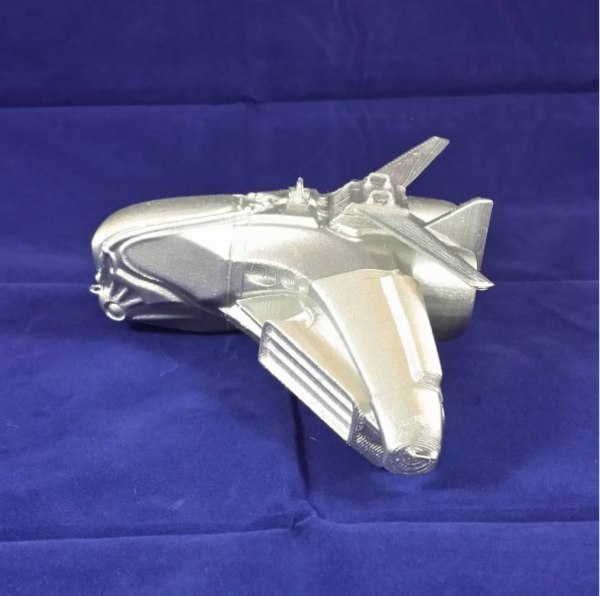 Note that there are other glues called Revell Contacta as well (Contacta Professional and Contacta Clear), on a completely different, non-CA basis, which is a bit confusing.
Note that there are other glues called Revell Contacta as well (Contacta Professional and Contacta Clear), on a completely different, non-CA basis, which is a bit confusing.
Alteco Super Glue D (20 g)
An example of a quality extra-thin CA intended for capillary effect gluing. Excellent for what it does, but it’s a rather expensive glue in a large container that thickens and clogs quite quickly, so make sure you can really use up all of it in a short amount of time.
Alteco super glue (3 g)
Last but not least, the plain, worldwide available Alteco glue tube. Best tensile strength test results, excellent value.
Warnings, tips, and fun facts about cyanoacrylate
CA is relatively non-toxic (despite the “cyano” that sounds like cyanide), but the fumes can be a strong irritant, especially when CA is used in larger amounts and/or poorly ventilated space. The symptoms are not serious but can be unpleasant (like common cold, itchy eyes, stuffy nose).
There might be a strong, exothermic reaction in contact with some fabrics, for example, cotton or wool. Usually, the fabric just becomes warm on touch, but in an extreme case, CA could really burn a hole in clothes and towels, while emitting smelly white smoke!
By the way, note that the emitted heat depends on the quickness of reaction, therefore when using activators to speed things up, the heat also increases, sometimes to a level where it could slightly deform materials with low-temperature resistance, like PLA.
There is one thing CA bonds better than anything else: the human skin and tissue! This is actually not a bug, but a feature 🙂 The first widespread practical use of cyanoacrylate was by combat medics in the Vietnam war, to quickly seal wounds on the battlefield. To this day, many hobbyists use CA to tend little finger cuts, ranging from rock climbers to scale modelers. The common issue is that they can’t use a regular band-aid because they need to keep maximum sensation in their fingers. Feel free to try this, at your own risk of course! Keep in mind that regular CA is indeed not a medically certified product and can cause irritation to your skin.
Feel free to try this, at your own risk of course! Keep in mind that regular CA is indeed not a medically certified product and can cause irritation to your skin.
In any case, intentional or accidental, CA will easily peel off with shed skin after some time.
One last warning: everyone thinks accidents with superglue only happen to stupid people until it happens to them. It could happen even to some of the world leaders!
But seriously, opening a CA tube with your teeth while immersed in work and emptying it into your mouth is… an imaginable situation. By the way, one of our colleagues glued his knees together when he instinctively tried to catch a falling CA tube by slamming his thighs together, similar to an ice-hockey goalie save! 🙂 So, be careful.
Solvent-based glues
Solvent-based glues work simply by partially melting the material and chemically welding it together. Obviously, unlike with CA and debonder, this is an irreversible process and you have to be extra careful, as spilling the glue or joining the wrong parts means damaging or destroying your print.
It takes some time before the solvent evaporates and the material hardens again, thus giving ample time to adjust and fine-tune the joint.
Because of the longer setting time, consider using some tools to hold the parts together: clothespins, rubber bands, or various clamps, available both in model hobby shops and large DIY stores. Pressing the parts together can greatly improve the strength of the bond.
Even though the parts often hold together just fine in a couple of seconds or minutes, the joint takes a longer time to fully cure. Actually, with larger prints (or if you use too much glue), it can take many days, while the joint still “breathes” the solvent ingredients (you can check the smell by putting the glued object into a closed container).
Even a fully cured joint will not have the exact same characteristics and mechanical strength as the surrounding material, but you can get quite close when taking the time to prepare the mating surfaces and pressing the parts together long enough.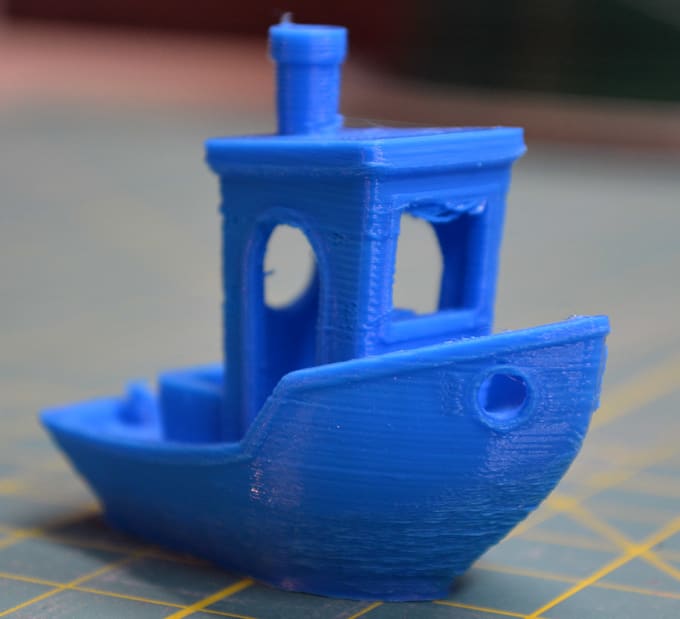
Note that as the glue evaporates, the joint tends to shrink (sink) a bit.
Unlike with CA or two-part epoxy glues, you can hardly use solvent-based glues as a coating or putty, as it is just melting the surface while adding little or no new material to it. However, you can fill larger gaps by gluing in pieces of plastic or filament bits.
Although it can thicken and dry out, generally, in an airtight container a solvent-based glue could last for many years. A clogged cap could actually help to seal the tube airtight 🙂 There are two basic types of solvent-based glues: extra thin glue consisting of a solvent or a mixture of solvents alone, and a thick glue, where the solvent is mixed with some dissolved material to give it more substance.
Either of these can be a commercial product or just a bottle of solvent, or your own ad-hoc mixture. For instance, pure acetone often serves as an inexpensive extra thin solvent glue.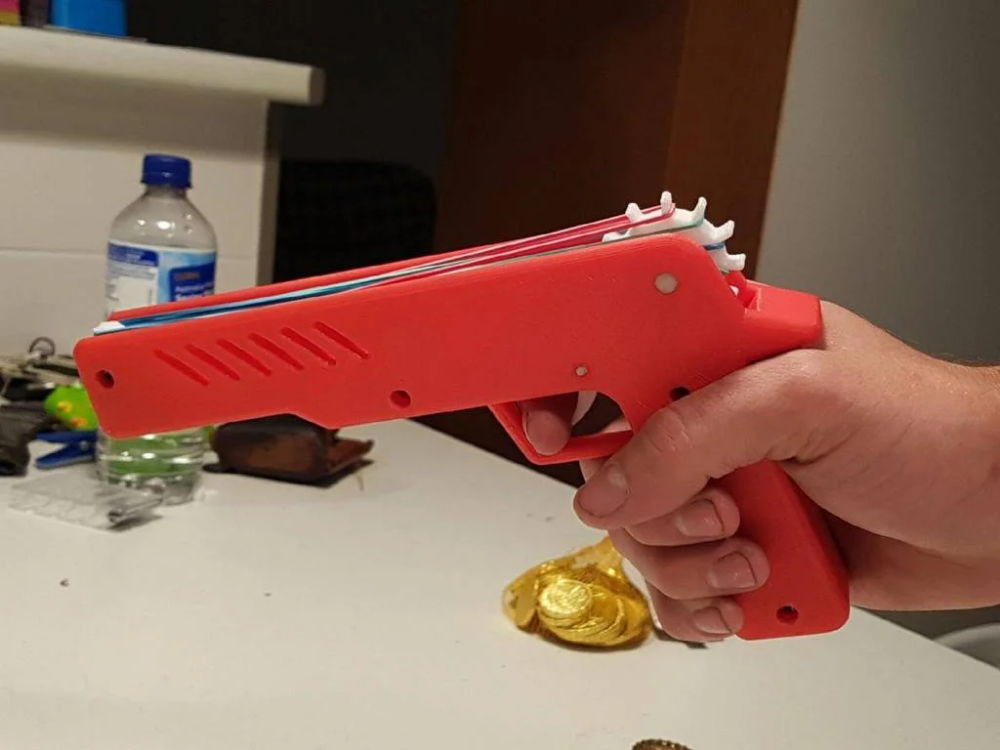 You can also make a thicker glue simply by dissolving pieces of plastic in it. Every veteran of 3D printing remembers (or is even still using) the ABS juice 🙂
You can also make a thicker glue simply by dissolving pieces of plastic in it. Every veteran of 3D printing remembers (or is even still using) the ABS juice 🙂
Capillary effect gluing
The main advantage of using the extra thin glues is employing a so-called capillary effect. Simply put, narrow spaces tend to “suck in” liquid. In our context, it means that instead of smearing the glue directly on the mating surfaces, you can just gently press the parts together and apply the thin glue from the outside. Dab the glue on a brush to the joint and in a split second, it will flow in and over the mating surface and glue the parts together. Repeat if necessary. This is a fantastic technique and if done correctly, presents the cleanest and easiest method of gluing.
However, there are few things to watch out for, especially when gluing typical FFF prints with a rather rough surface. First, the feasibility of this technique depends on the quality of mating surfaces – they should be really smooth and level.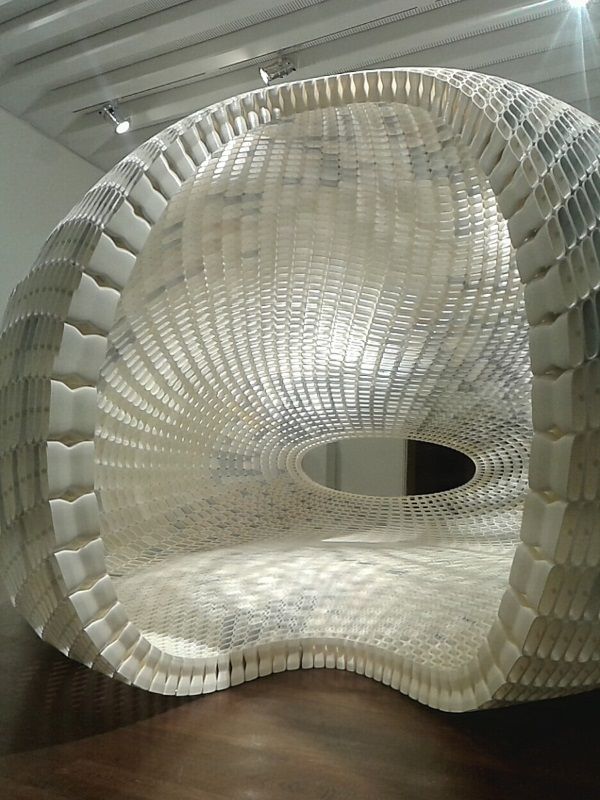 Secondly, the 3D print layers will also be subject to the capillary effect. And so will be your fingermark grooves! Both can make the glue travel somewhere you didn’t want to and damage the surface of your print.
Secondly, the 3D print layers will also be subject to the capillary effect. And so will be your fingermark grooves! Both can make the glue travel somewhere you didn’t want to and damage the surface of your print.
Which solvent-based glue to choose?
Compared to CA, solvent-based glues are much less universally usable. Different solvents are compatible with different plastics. The thick glues will still provide some sort of bond (since they don’t rely on the solvent alone, but the dissolved ingredients as well), but it is not going to be that strong. This is well illustrated in the tensile strength test table below.
When searching for compatible materials and solvents, you can check our great material table. ABS and ASA can be glued with acetone, HIPS with limonene, and PVB with isopropyl alcohol. Only PETG is unfortunately inert to all chemicals normally available to a hobbyist.
What material can be smoothed, can be usually also glued by the same solvent. Not always, though! Surprisingly, PLA can be glued with acetone just fine, even though it cannot be smoothed with it (it does nothing and in the end, the print just falls apart).
There is a wide choice of plastic modelers’ glues on the market. Because plastic models are made of styrene, these glues can be used to join styrene-based filament materials like ABS or ASA. However, there are surprising exceptions, so take nothing for granted! One of the modelers’ glues we tried didn’t react with ASA at all, even though it glues regular styrene perfectly (see below).
Examples of solvent-based glue products
UHU Plast Special (30 g)
Convenient, soft container with a long needle applicator. In addition to styrene-based materials, it should be effective on some other plastics including polycarbonate as well. Its consistency is about halfway between thick and extra-thin glues.
UHU All Plastics (30 g)
Thick glue in a tube, which doesn’t allow for much precision. Marketed as “universal”, however, the description kinda contradicts that: it says it’s not suitable for styrene, polypropylene, polyethylene, and other plastics. Mediocre tensile strength test results confirm the “jack of all trades, master of none” saying.
Tamiya Extra Thin Cement (40 ml)
Similar to Gunze Sangyo Mr. Cement, this is one of the two most popular extra thin glues for modelers. It’s in a glass container with a small brush built into the bottlecap. Note that Tamiya makes multiple variants: normal, quick-setting, for ABS, and a limonene variant (which could be handy for HIPS, but we didn’t have an opportunity to test that).
Revell Contacta Professional (28 g)
Similar to the UHU Plast Special. Don’t mistake it with the Revell Contacta Quick, which is a CA glue. Doesn’t glue ASA at all.
Humbrol Poly cement (24 ml)
A classic thick glue in a tube for modelers. Again, not very good for precise application, but relatively cheap and more suitable for large parts compared to the extra-thin glues.
Warnings about solvent-based glues
As was already mentioned earlier, the main disadvantage of solvent-based glues is irreversibility. Be extra careful not to damage the glued parts or your surroundings.
Also, take extra care regarding ventilation, solvent-based glues are generally those with the most prominent smell and flammable, harmful, or even narcotic ingredients (like toluene).
Two-part epoxies
The last type of glues we will describe in more detail are the two-part epoxy resins. These glues are stored as two separate components: the resin itself and a hardener. By mixing the components together in a prescribed ratio, chain polymerization is activated.
The disadvantage is obvious – mixing the components can be perceived as a hassle. You need a suitable disposable container – empty pill plates are great for this. You can also mix the components right on the mating surface. Be careful not to contaminate the resin with the hardener!
Similar to CA glues, there are several variants of two-part epoxies with very different qualities, depending on various additives.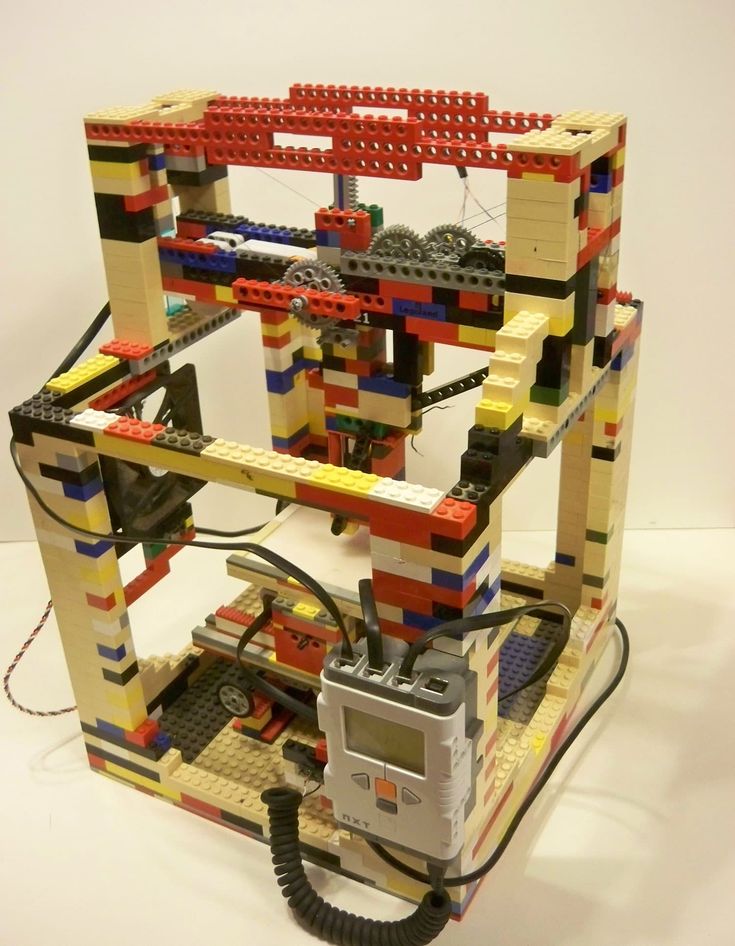 From the three options given in this article, they are the most flexible (figuratively and in some variants also literally). Some of them might be crystal clear and odorless, some look like stinky mud.
From the three options given in this article, they are the most flexible (figuratively and in some variants also literally). Some of them might be crystal clear and odorless, some look like stinky mud.
Two-part epoxies have a wide range of applications in postprocessing. They can be used as coatings or putty. Crystal clear variants that don’t shrink and frost like the CA glues, are often used for imitating glass (in model car headlights, etc.).
Probably the most prominent characteristic is the curing time of each variant, which could vary a lot, ranging from less than 90 seconds to more than 12 hours. The drying time can be increased or decreased a bit by the amount of hardener, however, it is not advisable to go against the instructions, as too much hardener can produce heat, create bubbles, or otherwise degrade the result.
Why don’t just always use the quick setting variants? Well, the long curing serves to provide plenty of time for the still liquid epoxy to creep in each pore and crack of the mating surface, thus providing a stronger bond.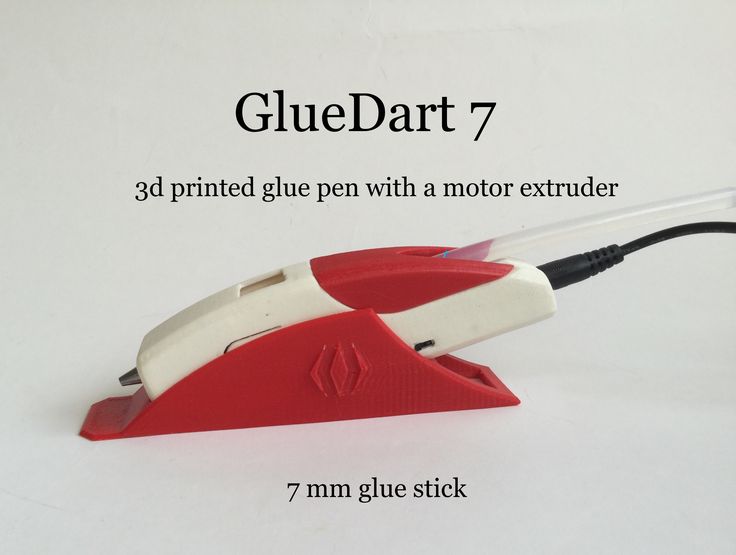 When using them as a coating, a longer time helps the coat to spread evenly (auto-level) on the surface. Also, the longer-curing variants are usually stronger and less brittle. It is possible to combine them with CA glue – attach the parts through a few CA points and fill the rest with epoxy.
When using them as a coating, a longer time helps the coat to spread evenly (auto-level) on the surface. Also, the longer-curing variants are usually stronger and less brittle. It is possible to combine them with CA glue – attach the parts through a few CA points and fill the rest with epoxy.
As for the shelf life, these could be a little tricky, as unlike CA glue which just rolls over and dies visibly, two-part epoxies might still look the same, but it seems their qualities degrade significantly, sometimes they never cure completely. For example, we tested a several years old Alteco glue, boldly called “3-ton epoxy” – let’s just say it didn’t hold up to that name and therefore isn’t even included in the test results.
Which two-part epoxy to choose?
As mentioned above, the two-part epoxies present such a huge group of products, it is hard to characterize them in a few sentences. Below in the examples, we offer two 5-minute variants, as this curing time is usually the convenient tradeoff for most applications.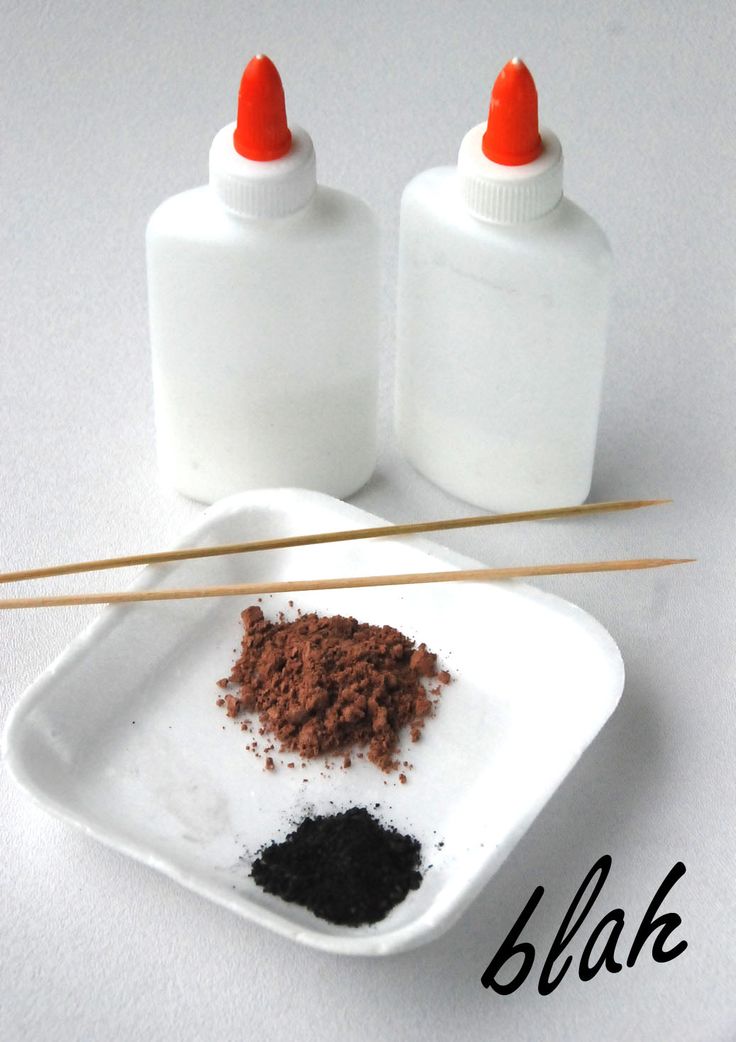
Two-part epoxies products examples
Super Glue 5 Minute Epoxy (28,3 g)
A special cartridge container that lets you squeeze out equal amounts of both components. Great for mechanically stressed joints.
Z-poxy (118 ml)
Very similar to the previous option, but components are in separate bottle containers.
Warnings about two-part epoxies
Similar to CA glues, epoxies are relatively non-toxic (always check the particular product though, as additives play its role, etc.), but can act as an irritant.
Reportedly, cured epoxy can be removed with acetone or vinegar, however, we didn’t have much success with that. The maximum you can hope for is to make the epoxy more loose and then scrape or peel it off. It does not dissolve like when using debonder on a CA glue.
Other glue options
We are still far from exhausting the topic, even with an article as loong as this one 🙂
There are many other glue options that we didn’t explore in detail. At least for the sake of completeness, here is a list with a few notes:
At least for the sake of completeness, here is a list with a few notes:
- PVA/wood glues (probably not strong enough for most plastics),
- contact cements, typically for shoe repairs, etc. (might be good especially for flexible filament materials!),
- hot adhesives, i.e. a glue gun,
- silicone,
- and gluing SLA resin with SLA resin cured with UV light (this sounds dubious, as the resin would probably cure just on the surface, but we found this advice on the internet, so who knows?).
There is one type of glue that deserves extra mention, even if it doesn’t really fit into any of the three categories above. It’s a real heavyweight weapon for gluing very large objects, for example, life-sized statues such as these gate guardians of our factory:
We are talking about a polymer-based, so-called mounting (construction) glue. Specifically, we use the Pattex One for All product made by Henkel. It’s available in a large cartridge (440 g), is easy to work with (on large surfaces), and has a strong bond.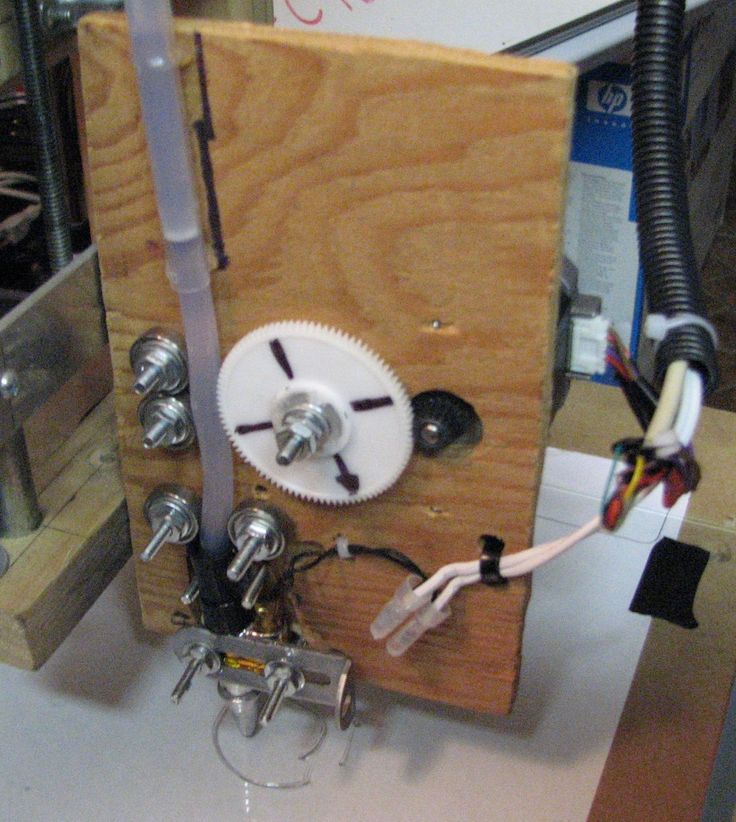 You can adjust the joint for about 10 minutes. It is fully cured in 24 hours.
You can adjust the joint for about 10 minutes. It is fully cured in 24 hours.
Non-permanent means of assembly
If you don’t want a permanent bond, you can assemble the parts using screws or magnets.
For example, tabletop wargaming miniatures often include magnets, either in their bases (to attach them to a magnetic box bottom for safer transport) or in their hands, so you can alternate between various weapons, etc. There are many articles and tutorials available on this topic, for example here.
Tip: In PrusaSlicer, you can use the Pause Print function to embed nuts, magnets, or other material right into your prints! You can consult our Knowledge Base article.
Results of a tensile strength test
Below you can find the results of a tensile strength test, made with the three most regular filament materials, using the standard printed samples and testing machine (the same as for example in the article about annealing). Please consider this just a very quick overview (a proper test would include multiple samples and controlled conditions).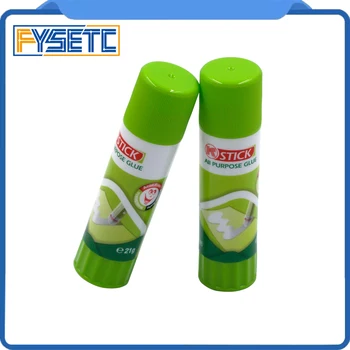
| PLA (MPa) | PET (MPa) | ASA (MPa) | |
| Peckalep Medium | 10.2049 | 12.5826 | 7.22657 |
| Loctite Control | 9.47398 | 5.93799 | 4.62067 |
| Revell Contacta Quick | 5.05587 | 5.46793 | 4.97564 |
| UHU Plast Special + | 0.85584 | 2.50882 | 2.47262 |
| UHU All Plastics | 4.92676 | 4.75582 | 4.29022 |
| Super Glue 5 minute Epoxy | 6.33216 | 5.12435 | 2.02793 |
| Z-poxy | 5.01506 | 3.72287 | 2.69042 |
| Tamiya Extra Thin Cement | 4.38035 | 2.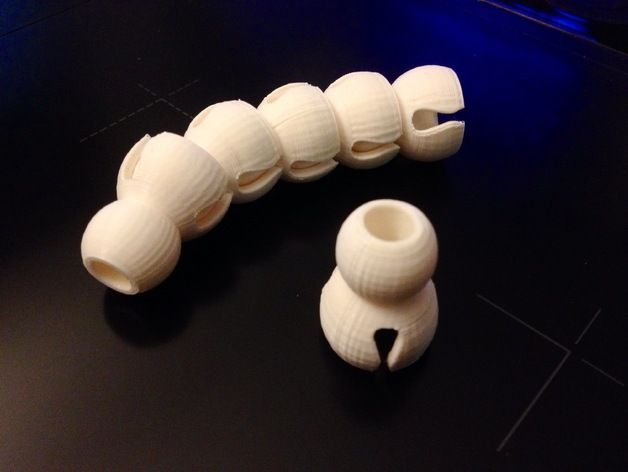 23122 23122 | 6.06334 |
| Alteco Super Glue | 9.8082 | 13.0643 | 9.43857 |
| Revell Contacta Professional | 2.024 | 0 | 0 |
| Humbrol Poly cement | 3.16562 | 3.44785 | 7.4363 |
| Alteco Super Glue D | 7.95353 | 4.47277 | 11.2999 |
Send us your feedback!
And that is all. Since we tackled a relatively broad and complicated topic today, we ask for your feedback even more than usual. Send us tips on local products that might help other people in your area, elaborate on some of the options listed in the “Other glue options” paragraph, or let us know about some completely different gluing methods we didn’t think about.
Happy printing!
Ultimate Guide to Gluing 3D Prints
Download the full Guide
as a PDF!
The simple post-processing techniques presented in this guide are an excellent way for professionals to create low-cost silicone molds, threaded inserts for enclosures, vacuum formed parts, and more.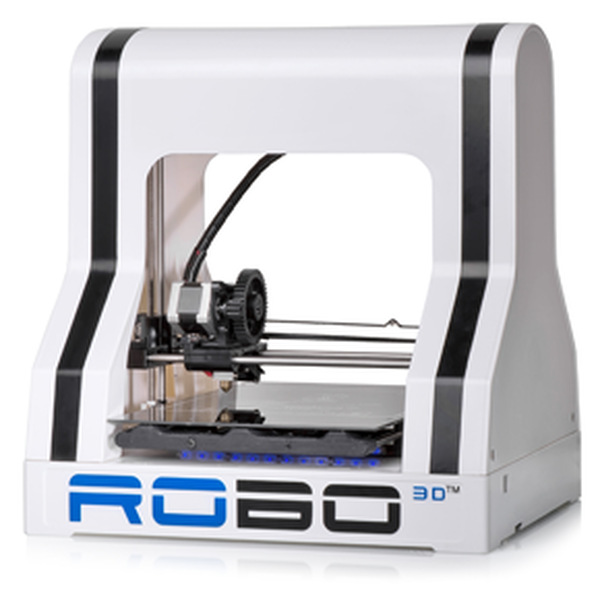
Gluing your 3D prints can be a powerful post-processing method if you’re looking to combine multiple components of an assembly, or create a model larger than the build volume of your 3D printer.
In this How To, we will show you some of the best practices associated with gluing your 3D prints.
Working time will vary depending on your model. The process shown took us about 20 minutes from start to finish.
SUPPLIES
3D Print with multiple components
Cyanoacrylate glue
2 part epoxy
Rubber bands
Paper towels
Scraping tool
400-1000 grit sandpaper
Respiratory mask
Gloves
Eye protection
Need some of these products? We've curated an Amazon wish list for you.
Great models can be found on Thingiverse or GrabCAD for free.
STEP 1: OBTAIN YOUR MODEL (DESIGN OR DOWNLOAD)
For our model, we chose a prototype hair dryer created by Ferro from GrabCAD.
If you’re designing from scratch, consider where you’d like the components to be joined.
The 2021 Guide to 3D Printing Materials
Learn about polymers, composites, and metals all available for 3D Printing!
If creating joints or keys for your model, make sure to create joining features large enough that your printer can create them cleanly. Generally, features should be larger than 4-5mm in diameter.
STEP 2: PREPARE
A. When preparing models for gluing in MakerBot Print, keep in mind how your print settings will affect the gluing process.
Consider: Print settings, print orientation, and number of build plates
B. Because of the size of our model, we chose to print on our MakerBot Replicator+ Desktop 3D Printer in MakerBot PLA.
Surfaces printed in the Z axis will have the smoothest surface finish.
Avoid placing support material around joining features unless necessary.
PLA is easy to print with and doesn’t shrink or warp during the printing process. Material such as ABS may warp or shrink, negatively affecting the fit of your model components.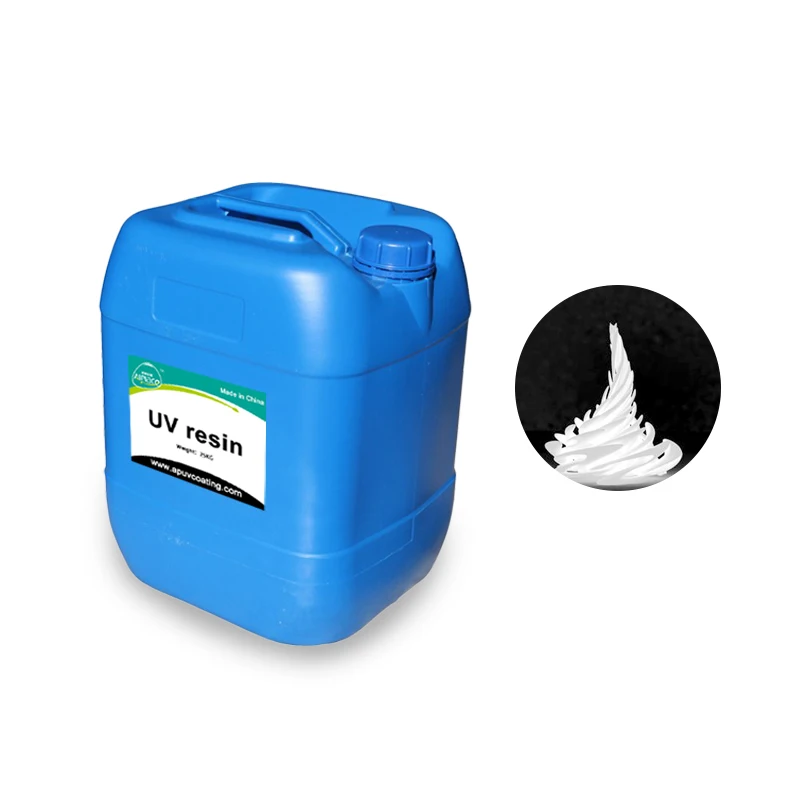
Supplies used: Needle-nose pliers or flush cutters
A. Remove prints from the build plate
B. Remove rafts
C. Remove large pieces of support
D. Approach smaller pieces and fine details
Take care around edges and seams to ensure your pieces fit together properly.
STEP 4: INSPECT JOINTS
Your model is ready to glue when all surfaces and joints are smooth and fit together as intended.
If you are having trouble fitting seams together or clearing any raft or support material, sanding may help. For more information on sanding, view
STEP 5: SECURE COMPONENTS
Supplies used: Rubber bands
A: Join model components using rubber bands
Join model components using rubber bands as they will better conform to the shape of your model.
If rubber bands don’t work due to the geometry of your model, try straps, tape or clamps.
Supplies used: cyanoacrylate glue, accelerator, paper towels
A.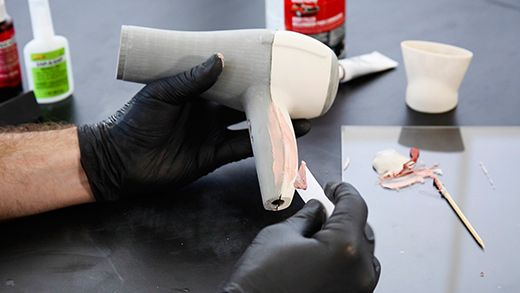 Begin gluing by, spot glue around your model
Begin gluing by, spot glue around your model
(this will ensure that your model is evenly attached in all places)
B. Apply a small amount of glue to a seam in a central location
TIP:
Work from the center of your model outwards in regular intervals to achieve even gluing.
C. Wipe away any excess with a paper towel
D. Use an accelerator and spray the area you just glued
E. Once glue has cured, remove the rubber bands
A. Apply glue evenly to the remaining unglued seams
B. Wipe away any excess
C. Spray accelerator
STEP 8: INSPECT
Take a moment to examine the fit.
Supplies used: Bondo, 400 & 1000 grit sandpaper and putty knife
If you find that your seams are rough or have gaps, you can use bondo or filler to smooth them - this works especially well if you plan to paint your model or create a silicone mold around it.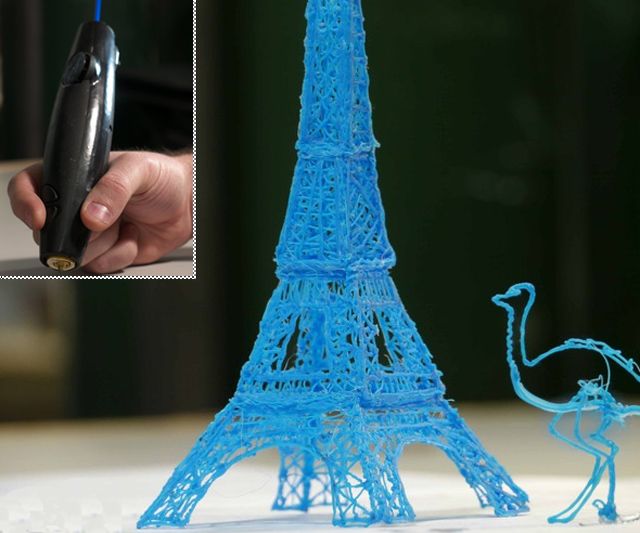
Fillers like bondo come in two parts - filler and hardener.
Take care around edges and seams to ensure your pieces fit together properly.
B. Wipe away any excess
C. Mix and spread generously across seam
B. Spread small amount of hardener next to filler
D. Allow to cure
E. Sand lightly using 400/1000 grit sandpaper
Visit one of our other applications pages for tips on how to take your print even further.
We recommend that you visit our pages on:
Sanding
Painting
Silicone Molding
Last but not least, remember to share your work with us on Thingiverse and social media @MakerBot.
We can’t wait to see what you make!
Hair Dryer Shell
Ferro
10/2/2015
https://grabcad.com/library/hair-dryer-shell-1
Powered by MakerBot Learning.
Testing liquid adhesives for adhesion
Technician
Subscribe to the author
Subscribe
Don't want
10
So we managed to assemble the whole team of liquid products to increase the adhesion of the table in 3D printing.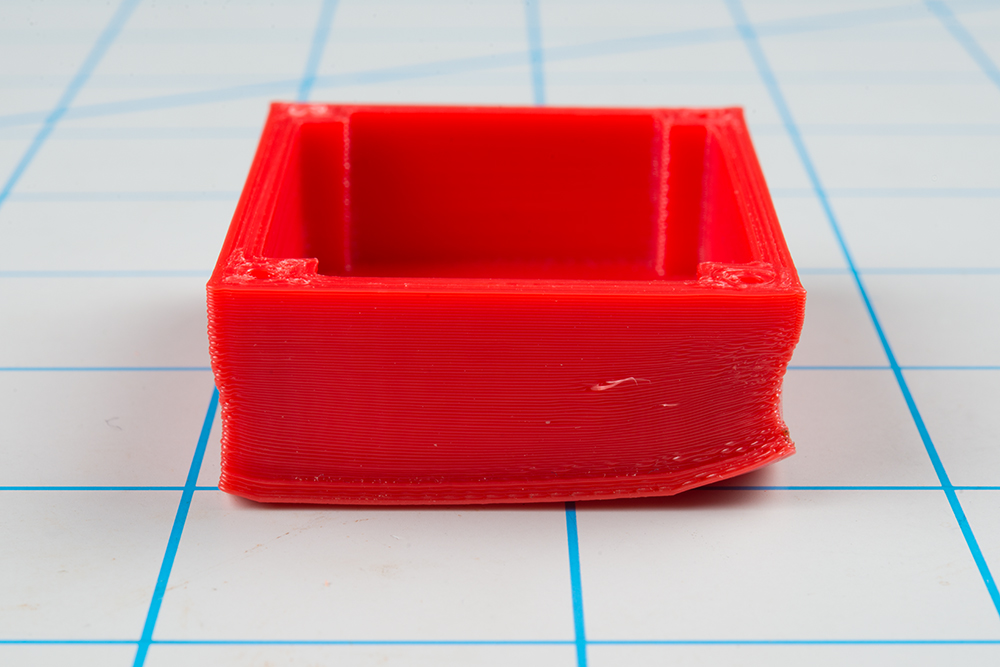 And this means that Mnogo3D, obsessed with adhesion, is back with you. Picaso 3D glue, 3DM 3D glue and I made 4D glue gathered in our hands at the same time. The first two are already familiar to the readers of the portal according to the test "Adhesion means: professional versus amateur". The last one just arrived. And so we will do a test of who is capable of what. In order not to be bored, the glue stick "Kalyaka-Malyaka" and Eeeee ... Povidone on isopropyl alcohol will take part in the test. Kalyaka is the standard of adhesion and it is needed as a guideline. And povidone to debunk or confirm the myth that a professional remedy can be created at home.
And this means that Mnogo3D, obsessed with adhesion, is back with you. Picaso 3D glue, 3DM 3D glue and I made 4D glue gathered in our hands at the same time. The first two are already familiar to the readers of the portal according to the test "Adhesion means: professional versus amateur". The last one just arrived. And so we will do a test of who is capable of what. In order not to be bored, the glue stick "Kalyaka-Malyaka" and Eeeee ... Povidone on isopropyl alcohol will take part in the test. Kalyaka is the standard of adhesion and it is needed as a guideline. And povidone to debunk or confirm the myth that a professional remedy can be created at home.
Since the last test, we have diluted our "Nurofen", bringing the concentration to approximately 1 sachet of medicine per 0.5 liter of alcohol. And very thoroughly mixed, getting rid of the flakes. Thanks for the recommendations on finalizing the solution to Ilya Pinchuk and advice on the test in general.
This time we decided not to test on nylon, ABS is enough.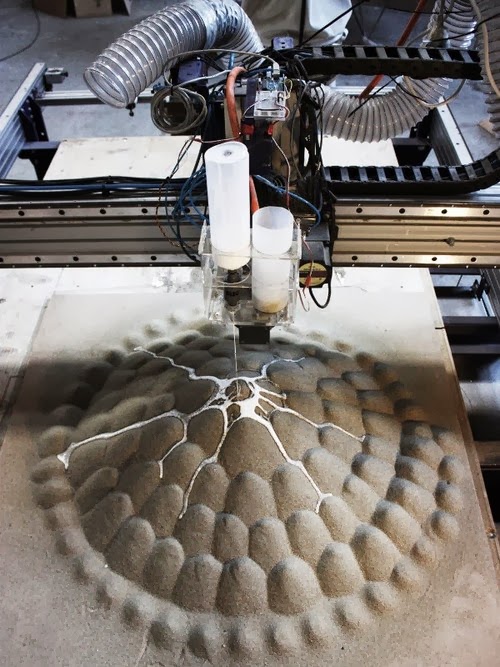 For the purity of the experiment, we will carry out the test on the material from two manufacturers. Black is Chinese, sold under the Good3D brand, and gray is from REC.
For the purity of the experiment, we will carry out the test on the material from two manufacturers. Black is Chinese, sold under the Good3D brand, and gray is from REC.
Disclaimer: I express my gratitude to the portal 3DToday because 3DM glue, as well as REC gray plastic are winnings in competitions held by him. Let's not forget Top3DShop either. Glue Picaso provided by them for the last test free of charge.
4D glues "I made" and "Kalyaka-malyaka" were bought from office. dealers without informing about the intention to conduct testing.
Introducing the participants. Glue from Picaso and 3DM are longtime players in the 3D printing market. Their composition is declared the same: Water, Isopropyl alcohol, P-complex and flavor. But manufacturers are different. 3DM smells stronger of alcohol. Either they saved on the fragrance, or the spirit was vigorous. 4D glue "I made" is different. In its composition, PVP is immediately indicated. It has a yellowish tint and is thicker.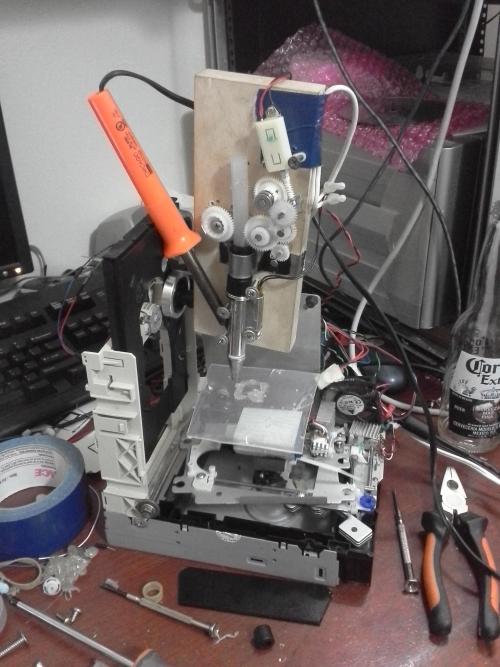 The smell of alcohol is less noticeable. On the contrary, there is a pronounced woody smell. Apparently the wombat is on the label for a reason. All three are supplied in 250 ml squeeze bottles. "I did" is also available in 100 ml bottles.
The smell of alcohol is less noticeable. On the contrary, there is a pronounced woody smell. Apparently the wombat is on the label for a reason. All three are supplied in 250 ml squeeze bottles. "I did" is also available in 100 ml bottles.
Homemade remedy is simpler and cheaper. In a pharmacy, we buy a sachet of medicine Enterodez 5 grams with the active ingredient POvidone and dissolve it in 0.5-1.0 liters of isopropyl or ethyl alcohol. Doesn't dissolve well. Therefore, you need to periodically shake the bottle until the flakes disappear. Why Povidone and where does the pharmacy?! It's simple, PVP is polyvinylpyrrolidone. And its other name is just povidone or polyvidone. This substance has a very wide range of applications in medicine and chemistry. But it is one thing to know the composition, and another to know the recipe. In the last test, homemade did not show itself in any way. Let's see what happens this time.
Magic glue stick "Kalyaka-Malyaka" is also not simple and has its own legends.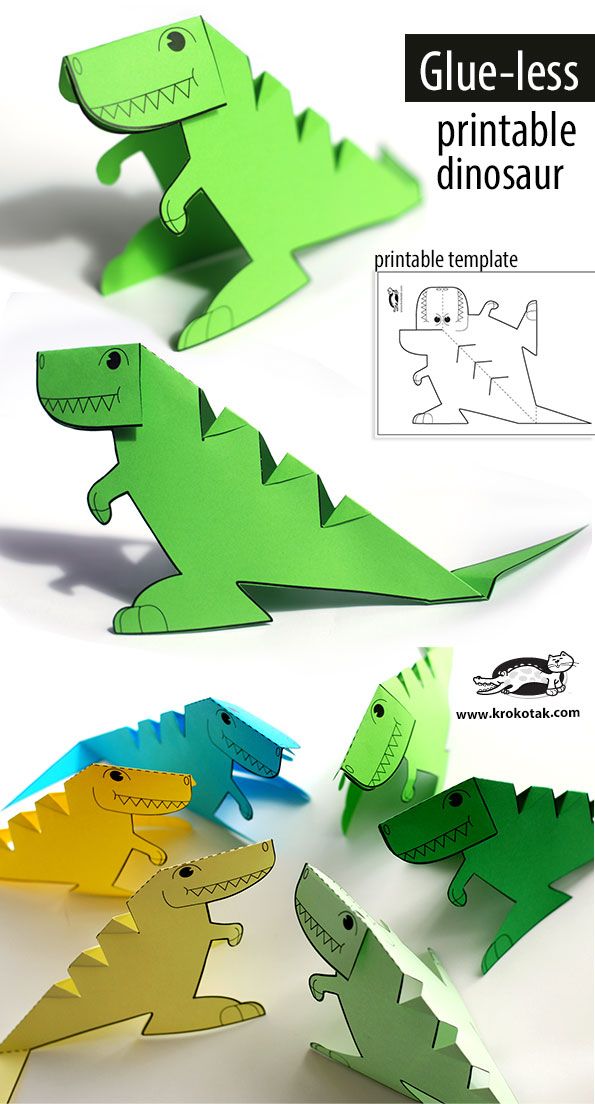 We took several briquettes of this glue. we prefer this particular method of adhesion and can debunk a few more myths about it. Actually everything is in the photo.
We took several briquettes of this glue. we prefer this particular method of adhesion and can debunk a few more myths about it. Actually everything is in the photo.
Even in one briquette there are tubes of different shades of yolk with contents of different shades of pink. Also different ends of the glue. Some are pointed, while others are flat. And all this in one sealed pack from the dealer.
And so... to the test!
Test piece:
Frame with 0.8mm wall, 15x150mm, 50mm high. We print with a nozzle of 0.8 mm and a layer of 0.3. The first layer is 50% of the base layer height. Speed up to 50 mm/sec. Brim at 5 perimeters. Printer open Corexy with ball screw. The temperature in the room is 22-25 degrees, without drafts. The surface is a mirror. The conditions are deliberately set to be unrealistic, so that it would be easier to evaluate the result by the amount of printed material.
The idea was to put 4 parts side by side and see what happens.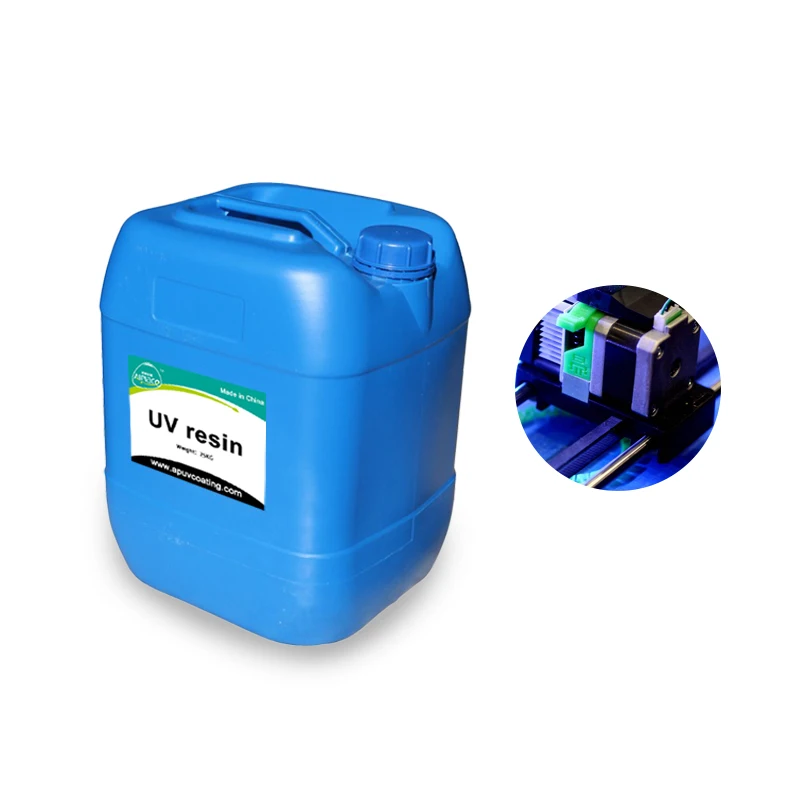
But the idea turned out to be so-so. A part that went out of the way caused the test to stop. Here, either apply the Olympic system, or test it for a long time and dreary piece by piece.
We settled on the last method and started printing the same code with different adhesives. Accordingly, they waited for the platform to cool down, washed it, dried it, degreased it with pure alcohol, dried it, and applied the composition.
Contrary to advertising, one coat of compound does not work! Not even two work. Applying a large amount is also not an option. You need at least three layers. And for 3DM, even three layers do not work. In this regard, for the outsiders of the first round, the adhesives 3DM and "I did" were given a second chance to prove themselves. In the second attempt, only 3DM was given a second chance. The concentration of the substance, apparently, is less in it. Therefore, after a failed attempt on 3 layers, the printing was repeated on 4. The difference, as they say, is "on the face.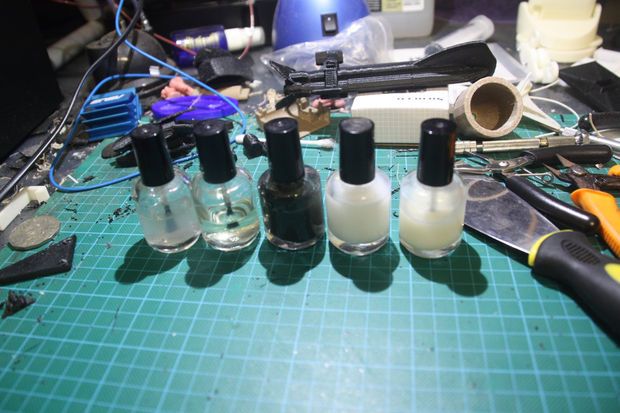 " Assigned seats are our subjective decision on typing comfort. And it wasn't easy. You run the test. You control that the brim began to stick to the table. If the composition is small, then a new layer of the composition was applied and the test was started again. If the print has gone, then you sit and wait for the coveted click and crackle of the extruder on skipping steps. You fix the % of the task completion and the separation. Stop printing. Table cooling, washing, drying and new. Over 100 photographs were taken. Let's show some.
" Assigned seats are our subjective decision on typing comfort. And it wasn't easy. You run the test. You control that the brim began to stick to the table. If the composition is small, then a new layer of the composition was applied and the test was started again. If the print has gone, then you sit and wait for the coveted click and crackle of the extruder on skipping steps. You fix the % of the task completion and the separation. Stop printing. Table cooling, washing, drying and new. Over 100 photographs were taken. Let's show some.
Picasso 1st attempt.
Most printing stopped within 30-50%. The best results were shown only by "Kalyaka-Malyaka".
3DM glue and its 3rd attempt.
It should be noted that REC plastic, unlike Good3D, is more rigid and more prone to delamination. On it, the subjects showed poorer results. In particular, in the second attempt, when printing on a painter, the plastic tore the brim, and not completely tore it off, as in all other cases.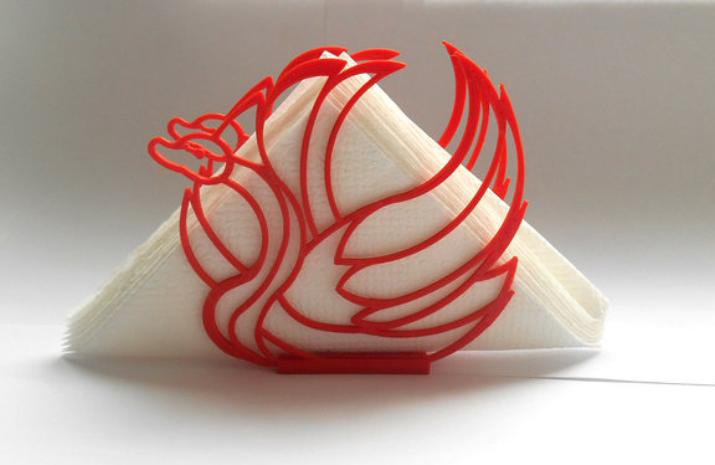
And almost broke another corner
Well, actually the results.
And in tabular form:
Thanks for reading.
Sincerely, Mnogo3D (3D printing in Ryazan and beyond)
PS Eta4Ever was the first in our VK mini-survey to guess which of the trinity of liquids is the best. Cool!
adhesion glue
Follow author
Follow
Don't want
10
Consumables for preparing for 3D printing: glue, coatings, films
Consumables for preparing for 3D printing: glue, coatings, filmsFilter
Sort by:
default price by name
default price title
Show per:
33 66 99
3D printing adhesive PICASO 3D, 400 ml
900 ₽
Available
It is intended for creation of adhesion between the first layers of the press and a working platform.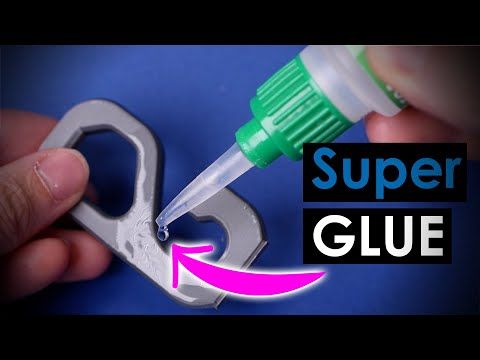 Volume 400 ml
Volume 400 ml
Lomond thermal film (10 sheets)
1 000 ₽
On order
Good for printing large and small parts in ABS and PLA, also try it for other materials...
Fixpad
990 ₽
On order
Good for printing large and small parts in ABS and PLA, also try it for other materials...
3D printing adhesive, 150 ml
300 ₽
On order
It is intended for creation of adhesion between the first layers of the press and a working platform. Volume 150 ml
3D printing adhesive, 350 ml
650 ₽
On order
Designed to create adhesion between the first layers of printing and the working platform.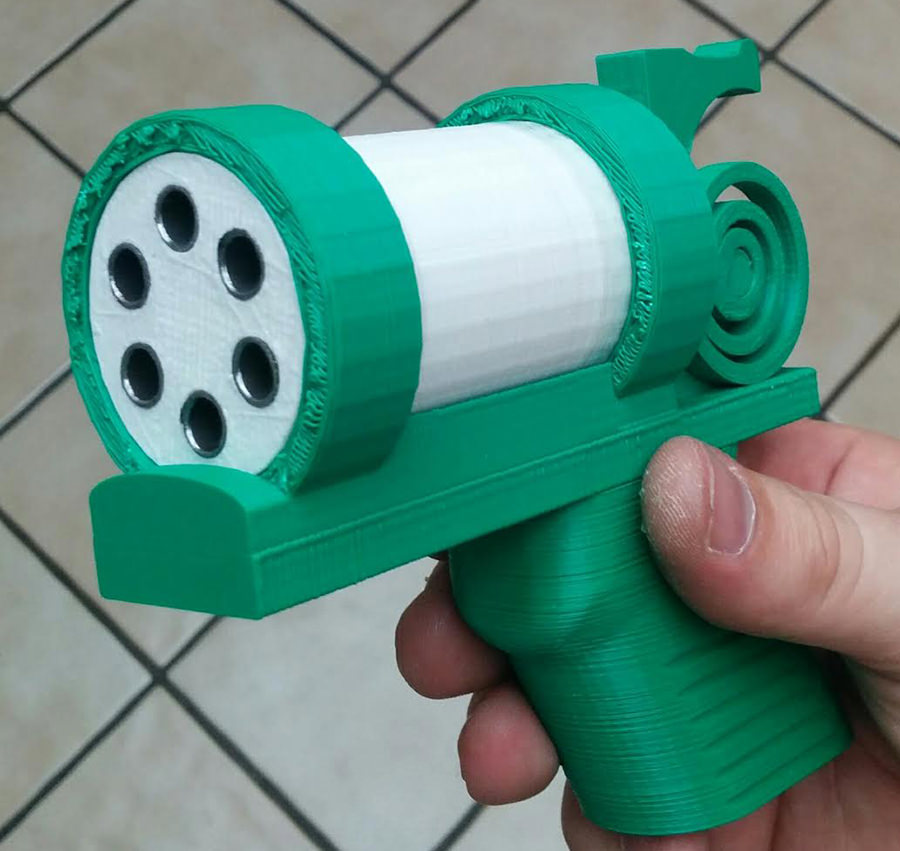 Volume 350 ml
Volume 350 ml
The3D adhesive for FDM printing 250 ml
590 ₽
On order
It is intended for creation of adhesion between the first layers of the press and a working platform. Volume 250 ml. Adhesive excellent for F...
QIDI X-Maker magnetic plate sticker
1 990 ₽
On order
QIDI X-Maker magnetic plate sticker. You can remove the sticker and bend it, which is much more convenient when removing the model...
Products: 7
Free education
Delivery across Russia
Customer Service
Warranty for all models
Any form of payment
Request a call back
Telephone
By clicking on the button, you agree to the privacy policy of
Item added to cart
Go to cart
Product added to comparison
Compare products
Cannot compare more than 4 products
Request KP
Organization name:
Your e-mail
Your phone
Name of contact person:
Legal address:
Comment:
By clicking on the button, you agree to the privacy policy of
Goods on the way, find out when the delivery is
Your name:
Your e-mail
Your phone number
By clicking on the button, you agree to the privacy policy of
Frequently asked questions
How to call
By phone +7(495)155-45-19. Your call will be answered by an answering machine. We won't call back if you don't speak up. Each request is processed, we contact clients in accordance with requests. Prepare the information you want to report, send it to the answering machine and we will call you back. We kindly request: do not be silent and do not hang up, this is just an answering machine. 🙂 Other most effective ways to get in touch:
Your call will be answered by an answering machine. We won't call back if you don't speak up. Each request is processed, we contact clients in accordance with requests. Prepare the information you want to report, send it to the answering machine and we will call you back. We kindly request: do not be silent and do not hang up, this is just an answering machine. 🙂 Other most effective ways to get in touch:
- Write to Telegam @techno3dru
- Write to Whatsapp +74951554519
- Write Email [email protected]
Is the product in stock
On the product page, under the product name, there are 3 statuses:
- In Stock - We have this item in stock. Make a purchase with the Buy button.
- Pre-order - goods on the way, delivery soon. Find out about delivery times by clicking on 'Delivery times' or make a purchase using the Buy button.




